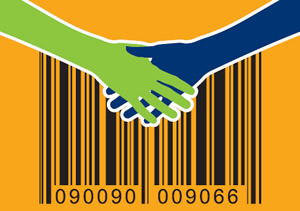Saving Big With Cooperative Purchasing

PHOTO © DUSIT/SHUTTERSTOCK
“I first came into contact with cooperative purchasing in the 1990s,” begins Rick Gay, CPPO, RSBO, purchasing manager for Baltimore County Public Schools in Towson, Md. “I was in Houston, and Region 4 administrators started a cooperative to buy computer equipment, which was expensive and required a lot of capital at that time. When linked with other schools, we were pretty formidable with the buying power we had. It just made sense to come together to get better prices.”
And that, rather broadly, explains how and why cooperative purchasing benefits school districts of all sizes. More specifically, cooperative purchasing is the ability of a public entity to use another public entity’s contract and thus save the time and money required to solicit its own bids. “Public entities can get the products they want at volume pricing,” notes Mary Beth Brennan, cooperative purchasing marketing coordinator for Keystone Purchasing Network (KPN) in Milton, Pa., a national program providing time- and money-saving solutions through volume discount pricing.
In the beginning
“E&I in Jericho, N.Y., was the first national cooperative purchasing agency,” offers Duff Erholtz, manager of Membership Services for National Joint Powers Alliance (NJPA), Staples, Minn., which serves more than 50,000 member agencies nationally. Regionally, NJPA is one of nine Minnesota Service Cooperatives.
“State contracts followed soon after,” says Erholtz, “with each state creating a purchasing agency to make contracts for their public entities to use. Next, U.S. Communities, which has headquarters on both coasts, was the first of our ilk to emerge on the scene. Now there are quite a variety of them.
“Cooperative purchasing has been driven by the users’ needs to meet their own specifications and find solutions that benefit their districts,” Erholtz continues. “The main difference is that today you have a choice, whereas, in the beginning, you didn’t.”
Gay, whose district’s FY 2014 budget is $1.4 billion for 108,000 students in 173 schools, programs and centers, agrees with Erholtz, noting that cooperative purchasing is now an accepted procurement practice. “When it first began, there weren’t state laws in place to allow it. Now almost every state has cooperative purchasing-enabling legislation. Granted, every state has different documentation requirements and procedures to use the contract, but the take away is that they do allow it. As it has matured and gained acceptance, I use cooperative purchasing all the time. In fact, I’ll use it before I do my own solicitation.”
Quantity and quality
With the choice of using cooperative purchasing comes the choice of which cooperative to use. “Not all cooperatives or cooperative contracts are created equal, both in terms of the legality of using them and the value you get out of them,” says Kevin Juhring, general manager of U.S. Communities, a national government purchasing cooperative. “They use different models and have varying degrees of oversight.”
In addition, Juhring continues, there has been a proliferation of cooperatives recently. Of the 12 national cooperatives, five of them have popped up in the last five years. “A lot of them have great nationalsounding names, but don’t have volume going through them. In this ever-growing environment of a new cooperative every six months, you need to do your due diligence,” he warns. “There are high-quality cooperatives out there.”
What defines a high-quality cooperative is straightforward. First, there are no fees to participate. “Across the board, most cooperative contracting agencies have no cost to join, no cost to use, no minimum to spend,” Erholtz indicates. Second, there is oversight of the organization. For example, Juhring notes that U.S. Communities has an advisory board that ensures the organization uses legally acceptable procurement practices. Plus, according to their website, the cooperative undergoes third-party audits on contracts to ensure that program pricing commitments are met, “with benchmark analyses against other suppliers and retailers to guarantee participants the best overall value.”
Shop till you drop
School purchasing officials are welcome to register with and shop from as many cooperatives as they like. “I think it’s expected that, in today’s world, there’s a need for school districts to use more than one cooperative,” says Juhring. Brennan concurs, noting that a great benefit of belonging to more than one cooperative is getting all the products you want.
But there’s also the savings benefit. Juhring observes that the percentage of savings achieved varies by school district size. “A smaller district will have a higher percentage of savings than a larger district,” he says. “While there’s no set rule, the range of savings is five percent to 25 percent.”
Gay sheds light on spending based on his own situation. “Our discretionary spending is $300 to $400 million per year,” he explains. “Of that, 15 percent to 20 percent is cooperatively spent.”
Additionally, Gay uses cooperative purchasing because there are savings to be gained beyond the actual price of the products purchased. “The work is already done for me,” he says. If someone in his district needs a specific product, he often finds it via a cooperative contract, which satisfies the person who needs it and satisfies Gay via a better price than if he bid for it himself. “If I had to create my own bid, the industry standard is that it costs two percent to five percent of the bid price. Then, it takes four to six weeks to create a bid, plus additional time to receive board approval. That’s a lot of time, effort and money. Often, it’s easier to write a contract and receive the product in a matter of weeks.”

PHOTO © DUSIT/SHUTTERSTOCK
Buying Power. Some who use cooperative purchasing say the benefits are that it saves money and time. In addition to the increased buying power created by the volume pricing provided by the co-op, some purchasing managers say the process saves time because much of the pre-purchasing work is done by the purchasing agency.
Look before you leap
Also, in terms of financial savings, know that sometimes there are better savings to be gained from a regional rather than a national cooperative contract. “About two years ago,” Gay explains, “for an office supply vendor for which we had a national contract, we were made aware of 7.5 percent savings to be gained by switching to a regional contract. We were spending $2 million with that vendor, so I had no qualms whatsoever using the regional contract, and the vendor had no problem giving me the savings.”
As a result of his experience, Gay encourages administrators to do strategic research. Analyze contracts and pricing models to get the best deal, knowing that no single contract is the best contract for everybody. He uses the TI83 calculator as an example: “We saw prices ranging from $75 to $125; that’s a big delta when you’re purchasing 2,000 calculators.” More, his district has an e-procurement platform, which allows end users to shop and compare like items among the contracts. “By giving end users a choice, I eliminate maverick spending.”
This just in: Cooperative directory
A new tool designed to aid administrators in their research is a cooperative directory website, www.procuresource.com, just launched by ProcureSource, LLC. It shows more than 500 contracts with more than 1,500 vendors from 10 cooperative purchasing agencies and growing. “It’s a tool that makes it easier for public procurement officials to identify cooperatives and their contracts and gives them all the due diligence they need to determine if they can legally access them,” says Juhring. “It’s completely free.” Cooperative purchasing has passed its infancy and matured into a tried-and-true route to time and financial savings. As Gay sums, “I tell my people that it’s about saving dollars and resources. When we do that, we have more dollars to devote to classroom resources, and that’s the bottom line.”
This article originally appeared in the issue of .